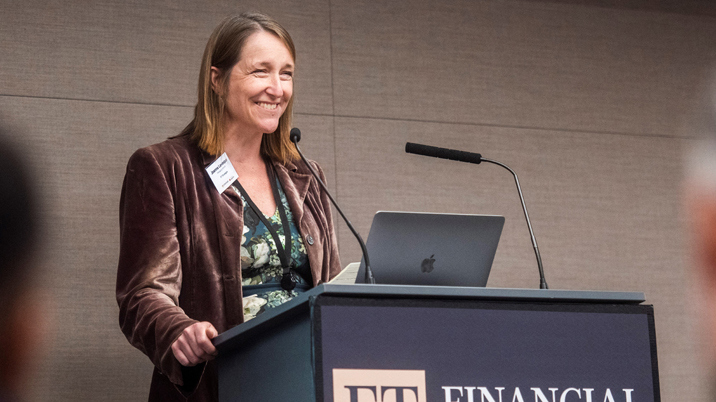
Q: How are audience expectations changing? What do 18-25 year olds want and expect from news media?
A:
The next generation has a complex and evolving relationship with the news. They simultaneously understand the value that news can play in their lives but are often disinterested or frustrated with how it’s being delivered to them.They want their news experience to be fundamentally different from what is typically offered today. In general, they are looking for three things from news media:
- A trusted source. While a trusted source is something that almost everyone desires, the next generation assesses trust in a different way to previous generations. During our research, we found that this group places greater emphasis on their affinity with the person creating the content, the lived experience of that person (as opposed to their accolades / academic achievements) and those who are highly transparent (they explain their funding mechanisms, they acknowledge bias and are willing to own up to their mistakes).
- Personally significant information. The next generation wants to decide what is relevant to them, as opposed to that being determined by editors or algorithms. They typically have a much broader definition of what constitutes ‘news’ than the classical topics that are reported on (current affairs, business, economics, politics). This means that they ultimately want control over the filtering of information.
- A desired storytelling mechanism. The next generation wants information presented in a way that works for them and their situation. As opposed to being singularly focused on one format, they are open to multiple different formats that meet their need at that point in time (eg. long-form video if they are studying). They also want the news to adopt a more informal tone and a simple vocabulary without being simplistic.
Q: How are audience expectations changing? Why should publishers be putting extra effort into their DE&I strategies?
A:
There is abundant evidence that younger consumers are proactively avoiding the news because it is not working for them. In fact, the average news subscriber (according to the Reuters Institute) is approximately 50 years old. Given the importance of an informed society in the context of a functioning democracy, younger generations cannot be ignored.There is also a financial imperative. It is a common misconception that young people are unwilling or unable to pay for news. This misconception results from an industry bias to focus on traditional news providers (eg. mainstream brands) and a conflation of print and online statistics. INMA has previously provided evidence to debunk this misconception:
- Americans aged 16-40 are “more than twice as likely to pay for or donate to email newsletters, video, or audio content from independent creators (47%) than to traditional sources like print or digital newspapers (22%).” (API, 2023)
- 19% of 18-34-year-olds paid for online news compared to just 13% of those who are 55+. (Reuters Institute Digital News Report)
Q: How can AI be used to power customer growth?
A:
One of the trends that I am most excited about is how generative AI can be used to ‘hand over’ control of formats to the next generation of audiences.Agnes Stenbom, head of IN/LAB at Schibsted, has said that generative AI can “be used to give users more control over how they prefer to interact with news content… For example, long-form text could be automatically converted into summarised bullet points or audio, giving users the choice of how they want to consume journalism.”
Whilst concrete use cases of such technology are currently limited, some news producers are actively experimenting. The BBC has been working on a flexible media tool that adapts content and formats to an individual’s personal preferences. Similarly, Danish publisher Zetland is currently using generative AI for transcription services but plans to use a wider range of tools that will support the creation of such customised experiences.
These are just a selection of the most exciting examples.
Q: Why should media companies be concentrating on content verticals?
A:
News organisations that fall within the generalist bracket are at risk – a successful subscription business requires a key point of product differentiation and the viability of a sustainable advertising-only business is being called into question as traffic declines. These challenges become more profound in a world of generative AI – as it becomes cheaper and quicker to produce general news, the competition for audience attention will only heighten.Therefore, many organisations need to start exploring niche content verticals (designed around specific audience segments) to build points of differentiation – both to secure future audiences and also improve financial performance. At the FT, we have been developing a multitude of these new verticals, such as Unhedged (led by Robert Armstrong). Unhedged is a newsletter, podcast, and FT microsite that “dissects the most important market trends and discusses how Wall Street’s best minds respond to them”.
Q: What lessons can UK publishers learn from the experience of Nordics publishers?
A:
There are a lot of shared learnings and experiences between our Nordic counterparts and ourselves, given the similar market maturities and history of subscriptions as a revenue source more generally. However, two things stand out in particular from our experience of working across the Nordics; the approach to hyper-personalisation, and the drive for revenue diversification.In general, this is an advanced market with advanced data and tracking capabilities. And one in which we are seeing user data captured and used in a way to optimise all stages of the lifecycle, including personalised homepages, dynamic pricing and personalised re-engagement strategies.
Given the maturity of the Nordics market, we are also seeing a plateau in subscriptions growth in the region, and active steps being taken to diversify core offerings. For those in a market leading position, this has meant strategic acquisitions of non-publishing targets that can complement their current portfolio. For others, this includes moving into TV, developing new B2B offerings, and developing community based events.
Q: How can legacy media companies leverage their experience and history to best effect?
A:
As our chief commercial officer, Jon Slade, said during a recent event that we hosted – “I prefer the word heritage, legacy implies ancient history”.For me, the key way that brands can leverage their heritage is by being the trusted go-to for consumers. Trust is particularly important in times of disruption, as audiences want high-quality news they can rely on regardless of whether that is in print, broadcast or online.
The FT has a proud history and our emphasis is on constantly maintaining our track record of quality, impartiality and accuracy throughout our reporting. This is even more important in a world of AI-generated content and growing disinformation. People of all ages are looking for sources of information they know are reliable regardless of where it is they consume their news.
Q: What’s in the pipeline from FT Strategies?
A:
We are excited about a few things in particular:- Expanding our work in artificial intelligence: we have already helped clients build AI-driven models (for example used to predict churn or grow customer engagement). We have seen a massive increase in demand for this work and we cannot wait to expand our experiments and co-develop more use cases for AI in the context of news.
- Hosting News in the Digital Age: we ran a brilliant event last year with over 300 executives from the European news industry. We are planning on doing it again this year – even bigger and better – with a focus on AI.
- More proprietary research: we are planning to launch additional research whitepapers on revenue diversification within news and how to capitalise on elections (both in terms of audience growth as well as monetisation). We hope these practical guides will prove really actionable and help grow sustainability within the industry.
As I get my feet under the table and see the incredible talent that the FT Strategies team has, I cannot help but be optimistic about our future.

About us
FT Strategies powers customer growth by providing the expert insight, integrity and consulting excellence required to transform the future of your business based on real-world, first-hand experience. Staffed by the experts who successfully transformed the FT’s business model in the face of disruption, we work with organisations worldwide, from a wide range of sectors, helping them increase recurring revenue, monetise audiences, grow subscriptions, build engagement, create a customer-centric culture, transform organisations, build new products and ventures, and future-proof businesses.
FT Strategies – There’s no one better placed to power customer growth.










